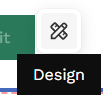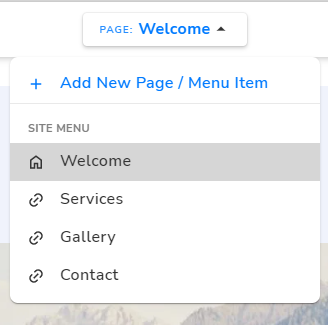FAQs
How much does a website cost? What does a Website.com subscription include?
The cost of running a website requires 3 essential components: the domain, hosting, and the tools for making a website.
A domain is the unique web address that visitors use to find your website, e.g. www.website.com. A domain name is usually a yearly cost, ranging from around $20/year and up.
Website hosting allows your website files to be stored and seen on the internet, and impacts you website's performance and reliability. This is typically a monthly ongoing cost, usually around $14.99/month and up.
The website platform you use to create a website is another factor. The cost of making a website differs depending on whether you choose a DIY approach or hire a web designer or developer. Hiring a designer can be a significant expense that generally requires an initial design cost and an ongoing maintenance fee.
With Website.com premium plans, everything is included to create your website, including a professional domain name for 1 year, web hosting, and a website builder with easy tools to create your site, sell products, and market your website. Premium plans range from $4/month (promo price for the first year), an extremely low cost way to own a professional website.
With a free Website.com plan, you'll get a free website name and can make your entire website for free. Keep in mind that Website.com premium plans include a professional domain name registration, more website pages and advanced features to make your website more competitive and professional.
How easy is it to make a website? Can I make a website without knowing how to code?
The Website.com website builder is the easiest way to make a website! Our innovative tools allow you to create your website without any design or coding experience. You can even create your entire website, from start to finish, right from a mobile device! Just start with a template, add your own website content, choose sections with the functions you need, and publish to get your responsive website online. If you need help, our support team is here to answer any questions you have. In addition, we offer web design services to help you craft your website on the Website.com website builder, giving you total control of your website after your design is complete.
Do I need a domain name? How do I get custom domain emails?
Yes, every website on the internet needs its own domain name. A custom domain name can make your website look professional online. A good domain name strengthens your brand, makes your website more memorable, and most importantly, helps visitors find you online.
With Website.com, you can start with a free website name, and all premium Website.com plans include a professional custom domain name for 1 year at no additional charge!
Problems can arise when domain names are left to expire or become open for anyone to register under their name, from identity theft and impersonation to extortion and malware injection. This is why Website.com offers domain auto renewal feature to help prevent these problems from appearing. Let us know if you are unsure about whether your domain name is set for auto-renewal.
Using your custom domain name in your email address (info@yourdomainname.com) can boost brand and create trust across all customer communications. Website.com Elite plans and above include professional emails at your domain name, and a mailbox to store your emails. You can read your emails anywhere, or set up emails to be accessed on the go.
How do I make my website mobile friendly?
More than 62% of users access the internet using a mobile phone around the world. That means a mobile-friendly website is essential for reaching potential visitors. Plus, mobile-friendliness is a critical aspect of SEO.
All websites made with Website.com are responsive, which means they are automatically optimized for both mobile and desktop devices! Your Website.com website will provide website visitors with an optimized user experience from any device they are visiting from.
How does my website get found on Google?
A top ranking on Google's results pages can greatly increase your website traffic, build your audience, and get more customers.
Website.com has SEO (search engine optimization) tools to help get your website found on Google and other search engines. Explore automatic mobile optimization, a site map generator, and the ability to employ on-page SEO techniques like image titles and page descriptions. Verify your site with Google Search Console using the site verification tool to help you discover the keywords that bring in the most traffic to your site.
























